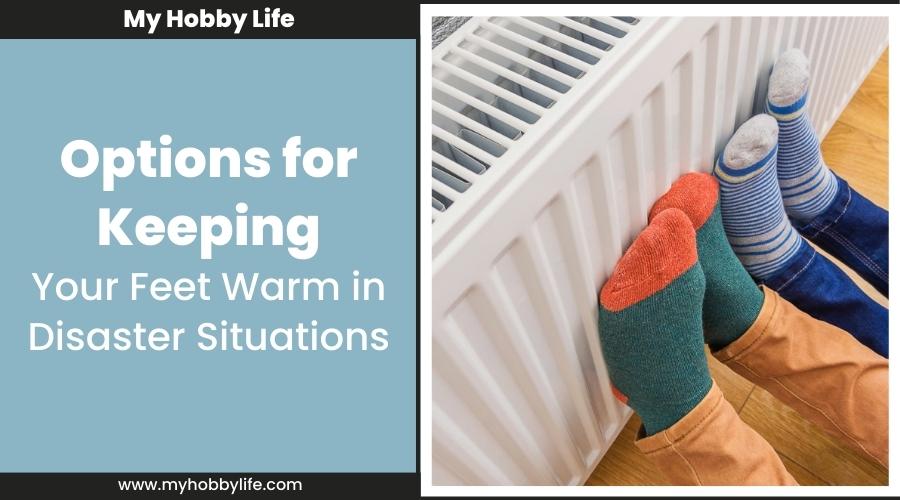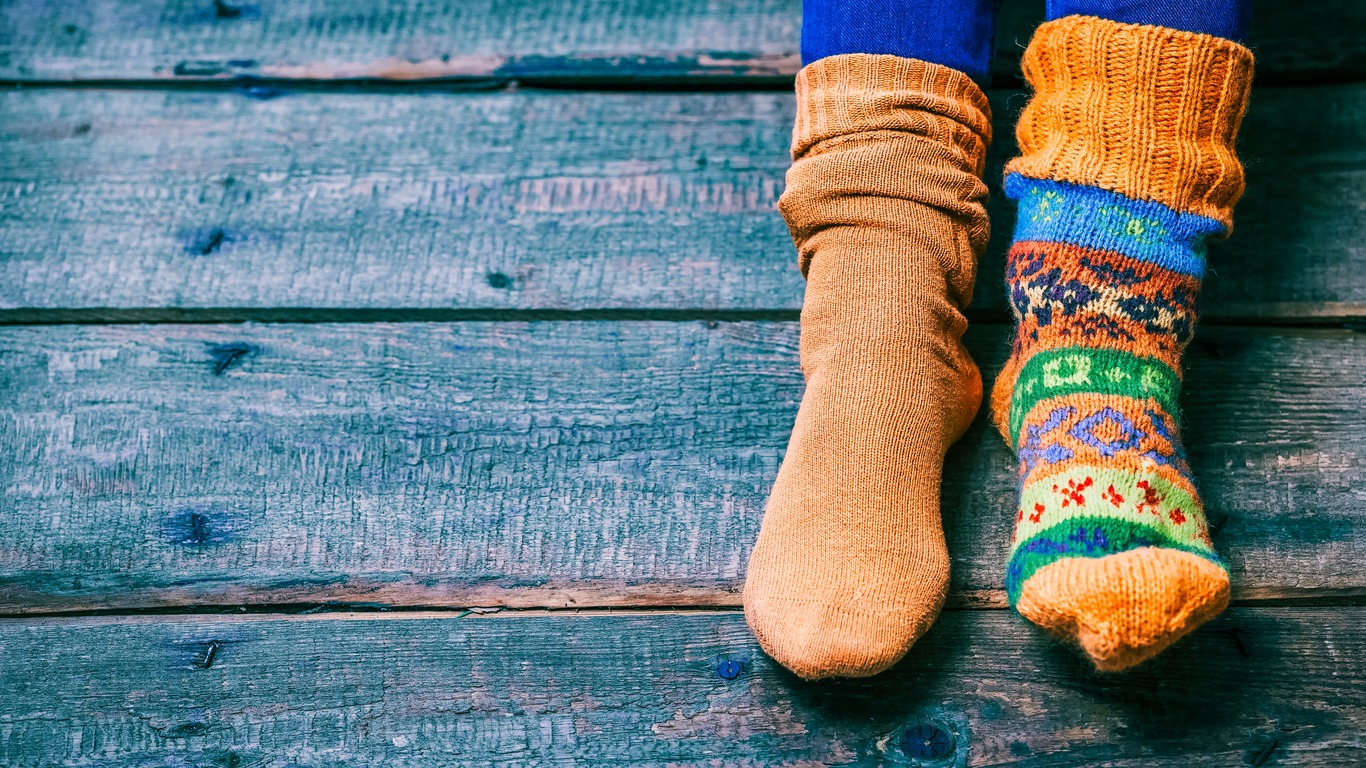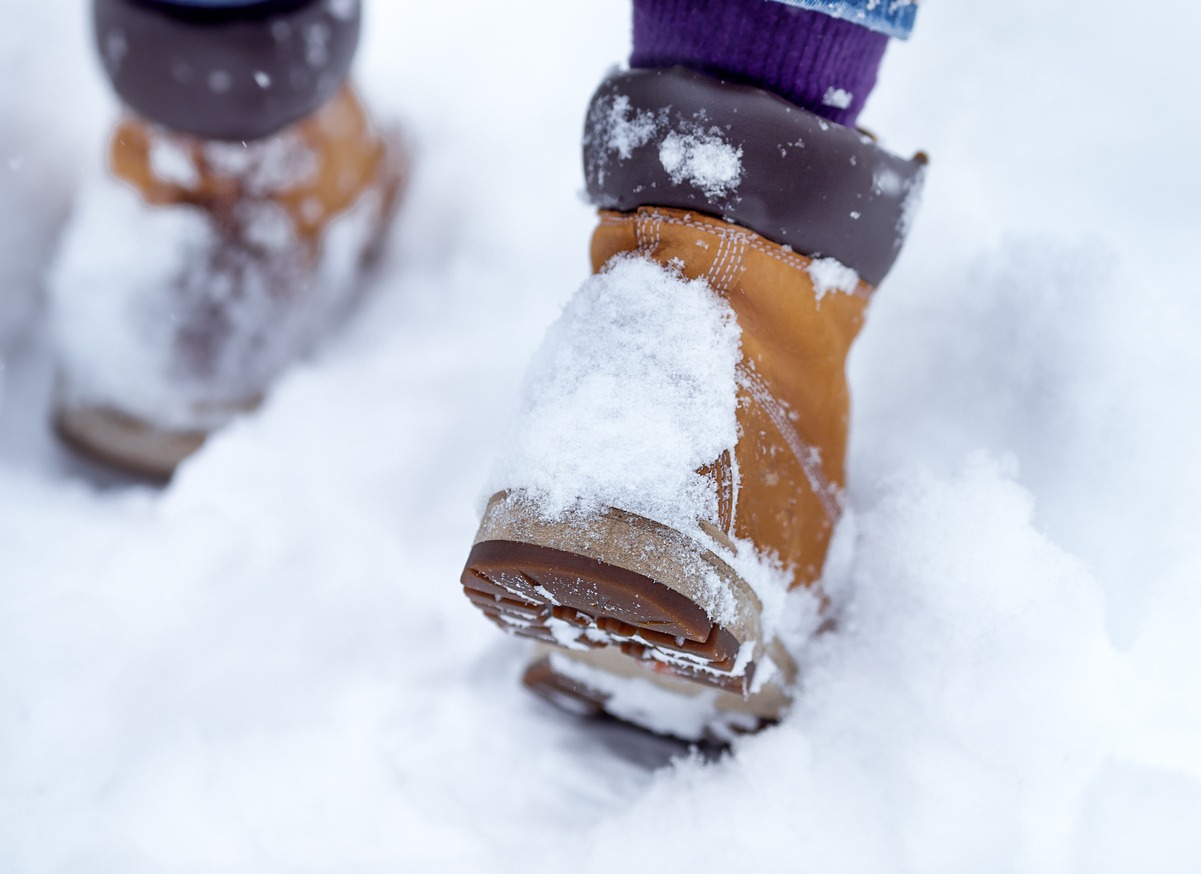Keeping comfortable is typically a priority to some extent, and this is frequently even more crucial for people following a tragedy when there are fewer things they can control. This can be more challenging if something catastrophic occurs in the winter or in a region where it is often colder, especially if the power is off.
The body will let the hands and feet become chilly before allowing the core temperature to drop since keeping the organs warm is vital, thus it may be necessary to discover ways to keep them warm. The use of socks as insulation within sturdy shoes or boots that keep the socks and feet dry is unquestionably advantageous even though they go a long way toward warming the feet.
Selecting the appropriate footwear can be more difficult than it first appears, but looking for sturdy soles and water-resistant uppers is a good place to start. Because you’ll probably need more than a pair of socks for comfort, pick shoes or boots that have room for thick socks.
Socks
Although it may seem simple, the first step is to start taking socks seriously. Not all socks are created equal, as you are surely aware. Some are so light that they hardly even register as clothing. Super-thin, sheer socks have their time and place, but if you want to warm up your delicate feet, tiny cotton socks just won’t do. To get warmer feet, you must wear the proper socks.
Look for a wool sock that is particularly thick and is either 100% wool or a wool blend. In comparison to other forms, knitted socks are frequently thicker. Try wearing two pairs of wool socks if you are still having trouble keeping your feet warm. Just remember that wearing larger socks works best because this choice can occasionally feel constricting. Another excellent choice is slippers made of wool.
Thermal or shearling-lined socks, sometimes known as slipper socks, are an additional choice that offers a little bit more insulation. It might not be a practical everyday solution, though, as this kind of sock will still need to be washed after one or two uses. You may always dry your socks for around 15 minutes before wearing them, regardless of the type. The rapid warmth from the warm socks may be sufficient to make you feel warmer for a few hours, even though the heat will quickly disappear.
Toe Warmers
Toe warmers are tiny pouches that you place in your boots above or beneath your toes and shake to activate, warming them all day. They often arrive in pairs, are packaged in plastic pouches, and must be shaken to activate. They contain iron, which starts to emit heat when it comes into contact with oxygen.
Although toe warmers may initially appear a little weird, they can be very useful. They can be purchased online or at the majority of pharmacies; their labels may read “hand warmers,” “toe warmers,” or both. They come in tiny packets that you tuck into your shoe’s toe box or sock. Toe warmers are highly effective. Your toes stay warm for a long time with toe warmers. They use an oxidation process that starts as soon as they are activated, which helps to make sure that they warm up quickly and maintain their warmth for a long time.
Keep Your Body Warm Throughout
One of the greatest ways to warm your feet is to keep the rest of your body warm, something you’ve probably heard before. In other words, your feet won’t be able to defrost if your arms, legs, and core are chilly.
Consider wearing leggings underneath your pants, layering several sweaters, or draping a blanket around your torso or shoulders. Try donning a warm scarf, knit cap, or even an electric blanket. You need to keep your head warm, much like when you’re outside. If not, you will become completely frozen.
Keep Moving
Moving around every so often will help keep your feet warmer in addition to wrapping them in warm clothing and materials. Your body tends to cool off when you sit or lie down for an extended amount of time. This makes getting up and moving around every hour a good idea.
Even in freezing weather, getting up and taking a short stroll around your house will stimulate blood flow and even raise body temperature a few degrees. You don’t need to run laps around your block. If you don’t know where to begin, try some basic stretches, a few squats, or just take a stroll through your house. You can increase your body heat by doing any of these.
Use a Space Heater
Residential HVAC systems are designed to heat an entire house, but if your house is full of cold air, it may take some time for the heat to reach every area. Even yet, certain areas of your home may not be feeling the love, leaving you vulnerable to cold exposure. Modern space heaters are a safe and efficient way to provide a consistent flow of warm air to your feet.
Many Space Heaters heat up quickly after being turned on and automatically shut off when tipped over to prevent fires. Furthermore, many space heaters are surprisingly inexpensive and small enough to fit below a desk, alongside a bed, or wherever you’re curled up at home.
Go for Waterproof
The key to keeping feet warm is keeping moisture out. In addition to the fact that feet constantly perspire (yes, even when it’s chilly outside), any leak in your footwear can also make your feet feel cold. It’s worthwhile to spend money on a quality pair of waterproof shoes or boots and make sure your boots and socks are dry before putting them on.
Avoid Caffeine to Keep Your Feet Warm
Although it may seem like a great idea to warm up with a hot cup of coffee, did you know that caffeine causes blood vessels to constrict? Your extremities may feel cold as a result of the reduced blood flow as a result. Consider a cup of decaf coffee, herbal tea, or even some hot cocoa if you believe a hot beverage may assist.
Use Heat Packs
You may have noticed hand and foot warmers in pharmacies, petrol stations, or sporting goods shops. Think about investing in reusable products rather than single-use ones. Not only will these reduce the amount of waste that ends up in landfills, but you’ll always have access to warm toes. These reusable heat packs can be “reset” by boiling them in hot water on the stove.
Use Liners
To help your footwear dry out more quickly if it becomes wet, many winter boots and shoes feature a removable liner, footbed, or insole. You can buy them to add to almost any shoe even if yours doesn’t already have them. For the winter, some boots come with sheepskin insoles, while others feature thick knitted boot liners.
If there isn’t enough place inside your boots or shoes for an additional layer, are you wondering how to keep your feet warm? Make use of sock liners. These normally fit underneath your regular socks and are made of very thin, moisture-wicking material. It provides additional warmth and shielding from the elements.
Boots
There are numerous things to take into account when selecting the best boots to wear this winter. Finding a pair that will keep your feet warm, dry and comfy is the most crucial step. It can be difficult to decide which pair is best for you when so many possibilities are available.
Although wearing thicker socks is a key component of the remedy, it can also contribute to the issue. A tight squeeze from wearing too many socks may ultimately prevent blood flow to your feet. Make sure your boots fit properly and provide room for your toes to move while accounting for the number and type of socks you use.
You’ll despise the long, gloomy winter months if you have poor circulation or simply don’t like the cold. Fortunately, there are simple methods for warming up and maintaining the warmth of your feet.


